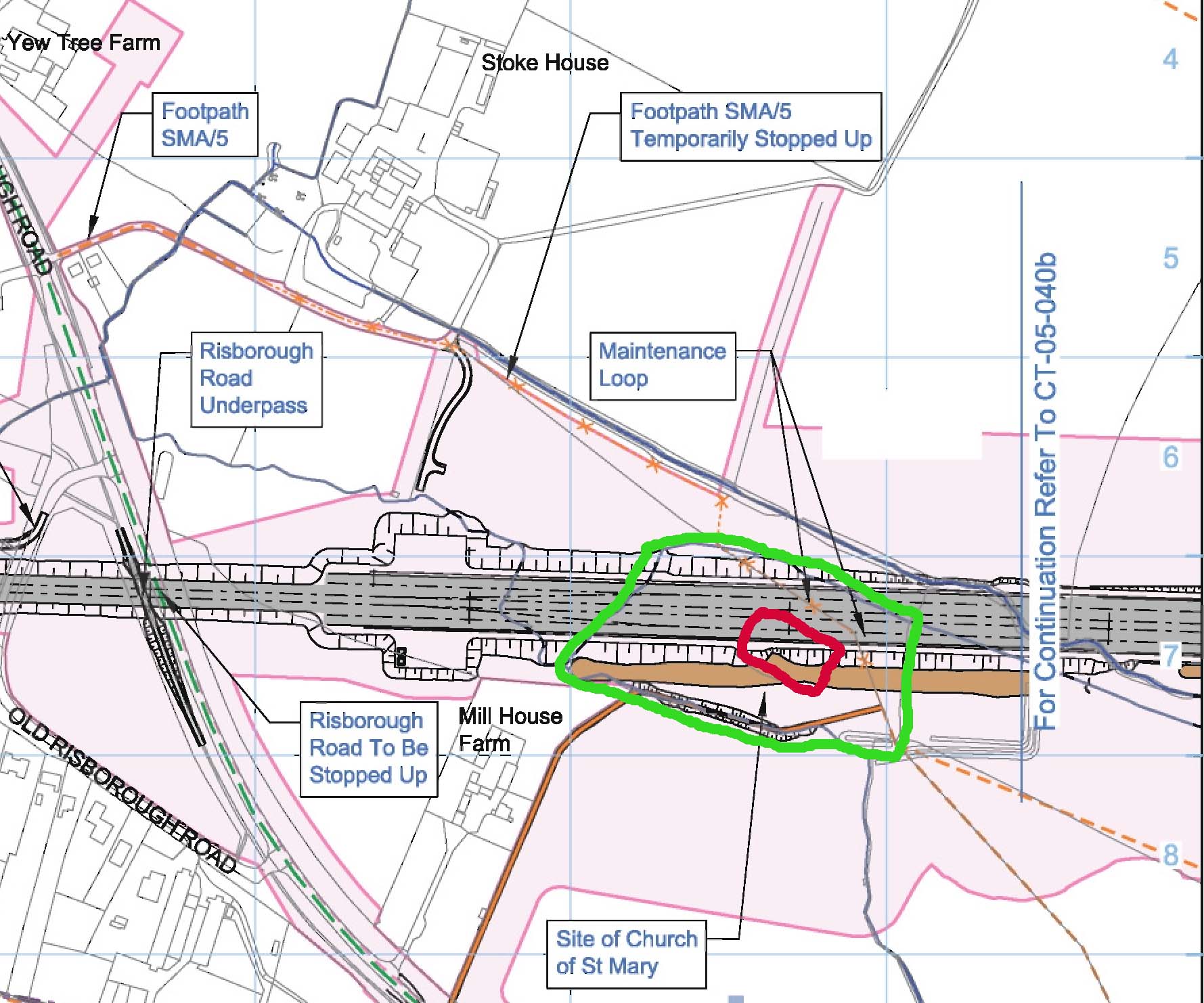
The effect of HS2
on the deserted village at Stoke Mandeville
THE HS2 HISTORIC IMPACT ASSESSMENT PROJECT
FROM BAD TO WORSE
THE original route of HS2 shown on maps issued in 2011 would have missed the old church ruins at Stoke Mandeville by about 50 metres. It would have clipped the outer enclosure around the churchyard, but left much of the deserted village site intact.
But this soon changed. In January 2012 HS2 Limited issued a new set of route maps. At Stoke Mandeville there was a re-alignment, mainly for engineering reasons, which would now take HS2 directly through the ruins of the old church, its graveyard and the remains of the Saxon, Norman and medieval village.
Worse was to come. In 2013 HS2 Limited issued a set of changes to the proposed line to provide its maintenance infrastructure, such as rail sidings and power transformer stations. These they termed ‘design refinements’.
At Stoke Mandeville the width of the line was more than doubled by the addition of a maintenance siding each side of the high-speed line, with an access roadway on each side beyond that. This means the complete obliteration of the deserted village site – church ruins, churchyard, watercourses, ponds, and any buried foundations remaining from the village houses and the bishop's watermill.
|
RIGHT: The HS2 engineering plan issued in 2013 shows the four parallel rail lines of HS2 where it passes through
the Stoke Mandeville deserted village site. The position of the churchyard has been outlined in Red, the ‘outer enclosure’ in Green. Both will be obliterated by construction work, as well as any buried archaeology in the immediately surrounding fields. |

|
STOKE MANDEVILLE IN THE HS2 ENVIRONMENTAL STATEMENT
The Heritage Asset Value given to the deserted village site in the HS2 Environmental Statement, issued in November 2013, was the highest possible. An investigation conducted for HS2 Limited by Cotswold Archaeology concluded that ‘These remains could date to at least the mid-Saxon period and possibly as far back as the 7th century AD.’
But the Statement also rated the predicted damage from HS2 as the maximum possible: ‘Major Adverse’. HS2 gives no concession to even the highest value of our heritage.
The society submitted a Response to the Environmental Statement, saying that ‘It would be best if this high-speed rail line might avoid this historically and archaeologically important site altogether.
‘In the absence of such an ideal solution however, ... this [highest] rating must ensure the fullest professional archaeological investigation and excavation of all elements of this deserted village site, starting well before any construction work begins in order to ensure its completion.’
The society has also called for provision within the HS2 budget for long-term storage and archiving of all finds and documentation, and special provision for the estimated 2,600 burials in the old churchyard.
Click here to read
the full text of the Society's Response
and
![]() the section on the Stoke Mandeville deserted village site.
the section on the Stoke Mandeville deserted village site.
ENGINEERING PLAN BY HS2 LIMITED